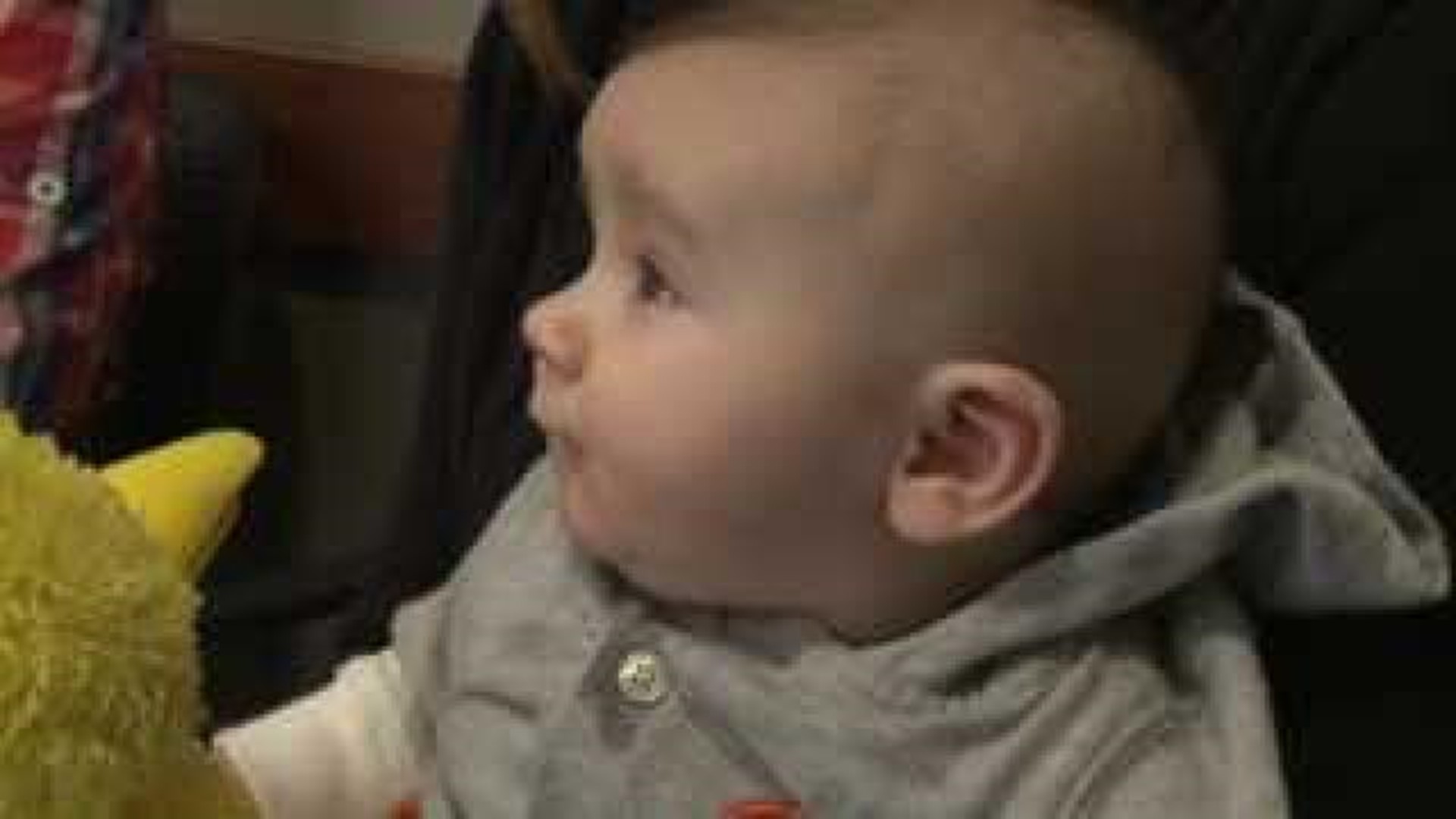Every parent wants their babies to hit all of the important milestones such as crawling, standing and walking. Once couple from Snyder County was no different, but wasn't sure what to expect when their son was born with clubfoot.
4-month-old Oliver Gordon is a happy, chubby baby boy who is a good sleeper and loves Big Bird. He's also completely healthy, except for his feet. His mom Amy, from Selinsgrove, said it was obvious from the moment he was born that his feet were turned inward.
"They could clap," she recalls.
Oliver had clubfoot, a congenital disorder that allows a foot or feet to form incorrectly. What causes it isn't known.
" Typically in the 2nd trimester the foor assumes a position, it's a rigid deformity, not diagnosed until kids are born," said Dr. Stacy Frye, from Geisinger Medical Center. Oliver was referred to her when he was about a month old.
Dr. Frye, a non-operative pediatric orthopaedist, explains that he was given a series of casts, once a week for five or six weeks, during which time his feet were gently stretched until they reached a normal position.
Now that Oliver's feet have been corrected, he wears braces.
"He has to wear them 23 1/2 hours a day. They keep his feet turned so they don't
come back in," said Amy.
He'll wear them for three months, then every night at bedtime until he turns three.
"He's a lot harder to cuddle when he has the casts on, and the braces. He likes to kick and if you're in the way it's dangerous!" said Oliver's dad, Chase.
It's a commitment for the family. But doctors say babies this age are fixable, and if clubfoot is caught early enough, they'll be able to hit every milestone along the way.
"Oh he's great! He's learned to roll over, he can push himself along. He's doing exactly what he should be doing, even with his braces on," said mom Amy.
"Studies are showing that 95%, if you have a child in experienced hands, are able to be corrected and go onto live normal lives. They can be active and do whatever they want to do," noted Dr. Frye.
According to the US National Library of Medicine, clubfoot occurs in about one out of every 1,000 births.

